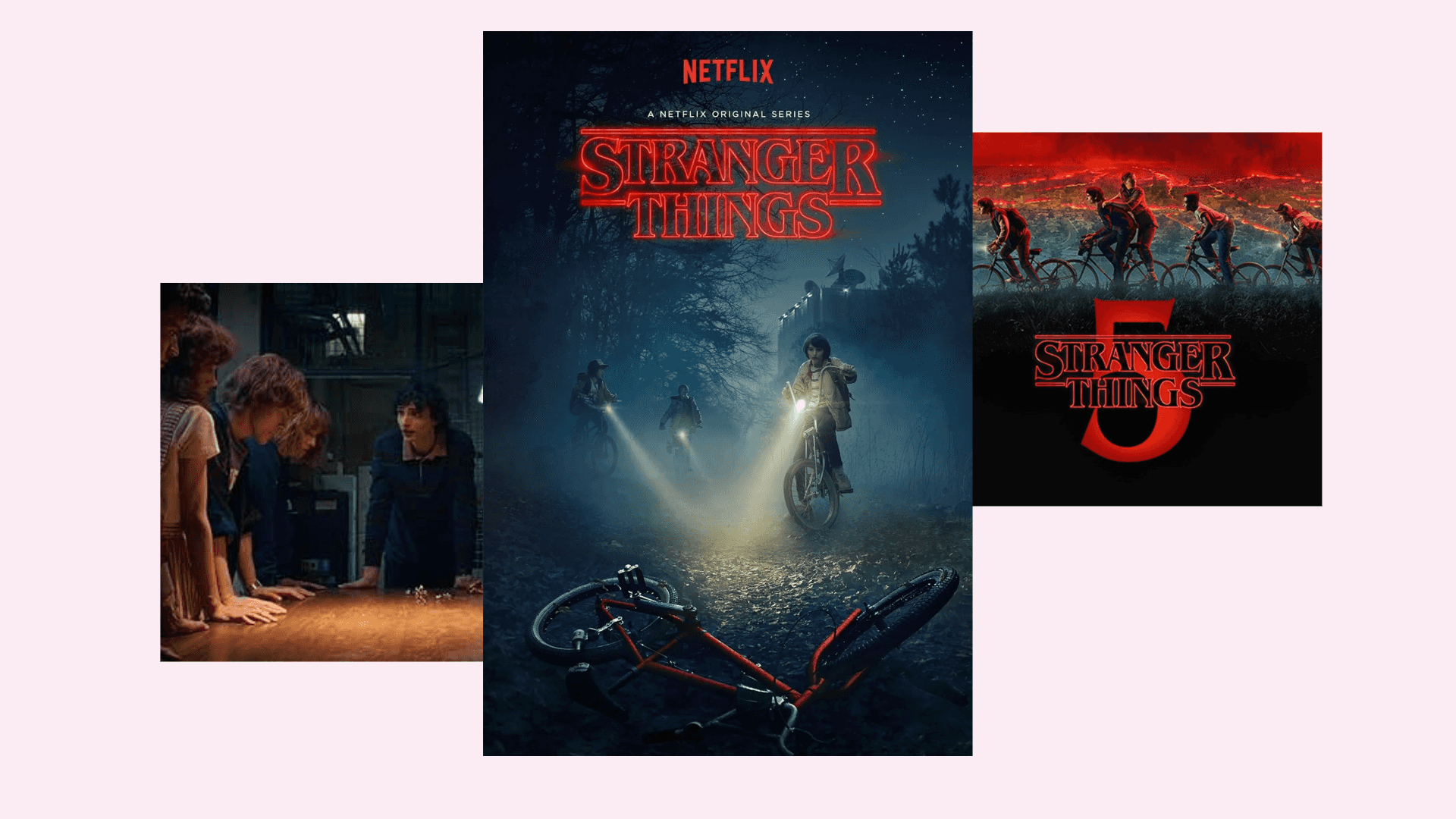
how to catch and care for unicorn content
Written by Sophie
Unicorn content is a unique topic that’ll no doubt pique the interest of any content writer or keen marketer. These magical and mythical top-performing pieces of content stand-out amongst the rest and sometimes you just don’t know how to nurture these high performing content unicorns so that they can work even harder for your brand. Well, that’s what we’re here for.
Our Senior Content Lead, Sophie, chatted about all things unicorn content as part of our recent webinar series. We thought we’d put it all down in writing for you just in case you missed it but, if webinars are more your kind of thing, you can find the full video at the bottom of this blog.
In this blog, we’ll be chatting about all things unicorn content, from how to find inspiration to how to make the most of the great pieces of content your site already has. Let’s get started…
So What Is Unicorn Content?
Unicorn content is the small minority of your content that drives the majority of your site’s results. Every website will have dozens if not hundreds (or even maybe thousands) of pages of content, from landing pages to blogs, guides and whitepapers. But somewhere amongst it all there’s a very small selection of shining stars, outperforming the rest of your content month after month. This is your unicorn content.
The concept of ‘unicorn marketing’ was first coined by Larry Kim (founder of MobileMonkey) back in 2018. He came up with the idea of content unicorns as a way to describe pieces of content that just magically outperformed other content on social media and on your website, going on to develop a series of top hints and tips to help marketers discover, look after and grow their top-performing content pieces. It’s truly a genius concept and if you do want to delve into the topic we massively recommend reading Larry Kim’s articles.
Unicorn content is not the same as ‘a unicorn business’ (a startup company worth over £1 billion) or ‘a unicorn marketer’ (an all-round marketing whiz with one or two specialist areas). While we reckon anything to do with unicorns is pretty darn cool, today we’re only going to be focusing on unicorn content.
How Do I Identify Unicorn Content?
You can measure the success of your content in different ways, including:
- Traffic/sessions
- Bounce rate
- Average time on page
- Scroll depth
- Conversion rate
If a piece of content outperforms the rest on even one of these metrics, you should really start to nurture it and try to optimise it to meet your brand needs.
What Makes Unicorn Content Great?
Having analysed thousands of pieces of content in our time, we’ve discovered three things that help to create content that delivers outstanding results:
- Relevancy – Your content talks about a specific topic people want to know about.
There’s an endless stream of content on the web, but unicorn content often picks out a niche topic people want to know about, that the majority of your competitors aren’t talking about. True, these pieces might not be targeting Hollywood keyword terms but this niche content is still doing great things for your brand.
- Uniqueness – You’ve found a new way to tell an old story.
Your content is, simply, better than the rest. Your competitors might have already written about the topic, and there might be a deluge of information out there, but you’ve found a unique way to put your point across. Whether it’s a super long-form piece or features visual infographics, your creativity has captured the attention of both readers and search engines.
- Luck – It was the right time and right place to publish your content.
You might have been the first out of the gate to publish a piece on a certain topic (such as an annual or seasonal round-up), or you just happened to get the amplification your content needed at the right time (perhaps a PR push?). Either way, your content just so happened to be exactly what the internet needed at the right time.
Case In Point: The Evolution Of Mobile Phones
We’re going to let you into a big secret now, so don’t tell anyone. Flaunt Digital’s unicorn content is The Evolution Of Mobile Phones. Written back in 2018 by our uber-talented Senior Technical SEO Lead, Daniel Dudley, this piece drives around 1,000 organic visitors to the website every month… but why is it such a high flyer?
Apart from the fact that it’s just bloody brilliant, we think there are some key reasons why it does so well for us organically:
- It’s creative. This piece was sparked from a great idea executed well, combining big ideas with big talent.
- It’s searched for. ‘History of mobile phones’ has 720 monthly searches, with ‘evolution of mobile phones’ receiving 480 every month. Who’d have thunk it? It might not have the biggest search volume in the world, but it’s certainly a topic we know people are looking to find out more about, making it a really relevant piece.
- It’s long-form. It doesn’t just give a little bit of information about the evolution of mobile phones, it gives readers everything they might want to know in short, sharp, digestible snippets as it guides you through the decades.
- It’s definitive. The piece includes rich, detailed information about the topic which makes it the ‘go to’ for everything to do with the history of mobile phones.
- It’s competitive. Just have a look at what else is out there on the topic. Ours is better.
- It looks good. The blog has a unique format, it’s seamlessly easy to navigate and the eye-catching design makes it more appealing to readers.
- It. Just. Works. Whether it’s the time it was published, the creative idea or simply the way it’s been written, the evolution of mobile phones just happens to have entered the magical realm of unicorn content.
How Many Content Pieces Will Become Unicorns?
Not many. If you’re a content writer, you’ll likely be creating dozens of pieces of content each month and whilst we’d all love to imagine that each one will be a big hitter, chances are most will achieve average performance. And that’s okay.
Eventually, you’ll find a unicorn or two and when you do it’ll be a magical moment. Because once you find a unicorn you’ll be able to get a greater sense of what works for your blog and your website. Repeat that process, learn from what works best for your brand and hopefully you’ll be able to catch even more unicorns in the future.
How To Create Top-Performing Content
So now we know what unicorn content is, we’re going to look at how you can better your chances of catching a unicorn.
Breed a unicorn by making sure you’re capturing Google’s (and the reader’s) attention. The internet is a pretty big place, full of an unwieldy wealth of information, and to compete in the SERPs and drive organic traffic your content has got to stand out somehow.
Do your research
Make sure the content you’re about to write is a topic people are talking about, but don’t become so obsessed with keyword research that it stifles your creativity.
A topic that attracts hundreds of searches every month would undoubtedly drive traffic… if you managed to hit a tip-top position in the SERPs. Which, let’s be honest, is significantly more unlikely for high search volume terms because they’re likely to be super competitive too.
Low volume keywords could be your key to success when trying to capture a unicorn. By taking a niche topic and putting your own unique spin on it, you can much more effectively position your brand as the voice of authority on that topic. Be really specific, considering exactly what target audience you’re going after and what questions they need answering. Content that tends to perform super well often focuses on a relatively niche subject matter but is executed brilliantly – so you’ll need to have a very clear vision before starting to write.
Competitor and audience analysis
What are your competitors talking about? What are bloggers/influencers in your space talking about? If you conduct regular, comprehensive competitor (and competitor landscape) research you’ll be able to find out either what content you know you can outperform or what content you can create to fill a gap in the market.
You could also explore forums like Reddit to help you discover the topics your audience are discussing and want to know more about. There are loads of quirky little niches in all corners of the internet, so don’t rule anything out when conducting content research for your next strategy.
Know your audience
Another top tip of ours is to consider what content your social media audience absolutely loves. Your social audience will likely reflect your wider target audience – including the type of people reading your site content – so take their engagement into account. If ‘how tos’ and ‘top tips’ go down a storm, try this format when writing your content. If long-form social posts or catchy graphics really boost engagement, then this avenue could be worth exploring on your site too.
Whilst unicorn content is all about driving organic traffic, if you can prove to search engines that your content is driving traffic from any source, the search engine is more likely to recognise your piece as a source of authority and adjust its position in the SERPs accordingly. Write what your audience will love and you’ll reap the rewards.
Take a chance
Yes, most of us SEOs do rely on structured research to help us construct a content strategy, but there’s nothing wrong with going a bit rogue every once in a while.
If you have a bit of a barmy idea or a uniquely creative way to tell a story you’re sure would appeal to readers, then give it a go and see if it flies. Fortune favours the brave, after all.
We don’t recommend abandoning your strategic approach altogether, but perhaps setting aside one piece of content a month for a wild card piece could be beneficial when it comes to discovering unicorn content.
Improve your content relevancy.
It doesn’t matter if you have the most impressive, creative idea in the whole universe – if your piece is poorly written and Google can’t understand what the hell your content is trying to say, you’ll never catch that unicorn. Ensure every piece you write is well-optimised and crafted to impress the search engines as well as your brand’s audience.
Here at Flaunt Digital, we use ‘Goose’, an in-house tool that helps us understand how Google’s Natural Language Processing (NLP) tools will interpret our content. By making some key changes to the first 100 words or so, we can make sure that content is fully optimised for search engines, helping Google to ‘get’ what the content is about straight away.
By keeping your content, particularly the opening section, crystal clear you can stay one step ahead of competitors from the get-go.
Make your writing shine
Writing well is an obvious one. Make sure your content is error-free and easy for audiences to understand. If your brand is in a more technical space, find a fun and engaging way to talk about a tricky subject matter – maybe an infographic, or a quirky poem?
Inventive, creative content normally does really well but you need to have the basics right before you can start jazzing it up. Don’t forget to add in optimised H1s and relevant internal links, and conduct your usual SEO maintenance to give each piece of content the best possible chance of performing well.
Find ways to make your content unique
Once you’ve found a topic you think could make a great unicorn piece, do your research and analyse the other top-performing pieces for that topic. Then, without putting it too bluntly, make sure you create a piece that’s better than the rest.
Use images, video, long-form, short-form – whatever helps you to do things differently. If you can put your unique spin on a much talked about topic, maybe sourcing an expert quote could offer that extra flair of authority.
Amplify your content
Share your content pieces on social media, your website, via paid ads, your newsletter and even with the press if you can. Tell your friends and family. Be persistent in trying to get your content out there to show Google that your piece of content is worth reading.
What If My Content Doesn’t Become A Unicorn?
Some content does really well from day one, whereas other pieces sink when they should float. You’ve followed all the steps and done all you possibly can to give your piece a fighting chance of becoming a magical unicorn… and it turns out to just be a plain old horse. Don’t be disheartened, dust yourself off and get ready to try again. If your content turns out not to be a unicorn, there are a few things you can do:
- Wait around six to twelve months before auditing the piece and making changes. This will help to give your piece time to settle.
- If your content achieves a small number of sessions and conversions, leave the piece as it is, accept it’s not going to be a soaring success but admit it does still have value to your site. Don’t keep pushing a low-performing piece if it isn’t going to pay off.
- Make some changes to try and optimise the piece further. Try crafting it in a new style or adding some graphics to see if that makes a difference to performance.
- Learn from your past failures and come back stronger when thinking of new pieces. Always take into account what’s worked in the past, and what hasn’t worked as expected when planning in future pieces.
Can I Choose My Unicorn Content?
Nope, sorry. You can try your best to make sure the content you publish on your site is always relevant, highly optimised and well-written but the fact is you just can’t predict ‘the one’. Your unicorn content might not be the best piece you’ve ever written. It might not be the most relevant. It might be grabbing too much of your site’s overall traffic, and underperforming on conversions. But it’s there, taking the top spot every time monthly reporting comes around. And you need to look after it.
How To Make The Most Of Relevant Unicorn Content
If your unicorn content is completely on-brand and relevant to your offering, you can look after it and nurture your content to ensure it works harder for your brand.
Track it
Keep an eye on your content each month, tracking areas for success. If you’re seeing your content gets loads of organic sessions but not many conversions, this could be a red flag as ultimately the end goal of most site content is to drive revenue eventually.
You also need to keep an eye on your unicorn content’s performance to identify if and when you start to see a decline in organic traffic, so you know when it’s time to optimise key sections or rework content that may now be a little bit out of date. Great content rarely lasts forever without a bit of TLC, but you need to let your data insights guide you.
Optimise it
If you’re seeing a decline in traffic, the piece might need optimising further. There could be a number of reasons for a performance decline. Perhaps the market has shifted, there’s been a Google algorithm update, your brand has refocused or a new competitor has sneaked onto the scene and taken the top spot in the SERPs. Whatever the reason, if you’re seeing your unicorn content not performing as magically as it used to, you’ll need to do all you can to get it back up to scratch.
Try tweaking your intro, adding relevant internal links, experimenting with tone of voice or the overall length. Don’t change too much all at once, but ensure your piece is up to date and relevant.
Train it
Every piece of content has to work hard for you, and drive results for your brand. However success looks to you, your unicorn content should be achieving gold stars every month.
If you’re noticing the piece is great for achieving high organic traffic but isn’t driving those all-important conversions, add in some more product links or photography to catch the eye of the reader. If your brand refocuses and the piece loses a bit of relevancy (say, a company that used to focus on being low budget suddenly becomes high-end), you will need to alter your unicorn content to ensure it reflects your authentic brand message so as not to confuse high amounts of visitors who land on your site through that specific piece.
Amplify it
It almost goes without saying that you should try to amplify every piece of new content that goes live on your site, particularly if it’s an important blog or guide that could provide genuine value to your audience. But when it comes to unicorn content you should probably share the piece more often than lower-performing content. Think social media, newsletters, paid ads – work with every specialist in your marketing department to make the most of your unicorns. After all, if the piece is super relevant to your brand then chances are it’ll be a key revenue driver.
Every time you tweak to your content, it’s time for a push across the rest of your channels again. New shiny stuff is exciting but don’t let your old content waste away either – particularly if you’ve given it a refresh.
Learn from it
Analyse what makes this piece so special, and make sure you work from this magic formula again. If ‘top 10’ listicle pieces are always top of the charts, this clearly works for your brand and your audience, so you should plan listicle pieces more regularly as part of your content strategy. If long-form, ‘how-to’ content works best, but fun and funky content pieces always fail to fly, then your content probably needs to be authoritative to appeal to your audience. Rework your content strategies to give yourself the best possible chance of finding a unicorn.
How To Transform Your Unicorn Content If It’s Not Relevant To Your Brand
It’s never the dream to find out that your fantastic piece of unicorn content just isn’t sending out the brand message you need it to. So how can you look after your content if you’re seeing a top-performing piece that’s not actually relevant to your brand offering?
Analyse it
We get that not all unicorns might not be all about your brand and 100% relevant to your audience. But you should always appreciate your unicorn and do all you can to nurture it – after all, it’s probably driving huge amounts of traffic to your website!
The best course of action is to find out when that piece of content was created and why. If it’s not relevant to your brand, who thought it was a good idea to integrate it into your brand’s strategy? Was it just a quirky idea? A mistake that got out of hand? A writer who didn’t follow the brief? Did a brand refocus completely ruin the whole point? Talk to the person who was responsible for the strategy and try to find out the original purpose of the piece. This will help you to find the best way to pivot the piece and make it work for you.
Don’t kill it
No, seriously, don’t ever kill a unicorn. Content writers have a tendency to remove content that doesn’t entirely suit the brand but please don’t do that! We know what you’re thinking: “If people are reading your content but they’ll never buy what you’re selling, what’s the point?”
Actually, any piece of content that drives traffic to your site is still super beneficial. A strong performance driver could have a positive impact on your site’s authority as a whole. So there really is no reason not to keep your unicorn content live on your website.
Refocus it
9 times out of 10 a piece of unicorn content will be loosely, if not entirely, related to your brand and its purpose. However, it might not be 100% focused on your brand mission or fully written with your audience in mind.
Make a few small tweaks if you can just to bring it back on brand, such as adding a more relevant intro or stronger CTAs. You could even try putting an expanded version of the piece behind a gated wall to encourage sign-ups to at least help interested readers make themselves known. That said, we’d never recommend putting your whole piece of top-performing content behind a gate, particularly if it used to run wild and free on your site. Alternatively, you could create fresh gated content around the subject matter you know works well, sitting it on the same URL as your unicorn content.
Grow it
Internal linking is a fantastic opportunity, even if your unicorn content isn’t 100% relevant to your brand purpose. Identify ways to use your high-performing unicorn content to link to other more important or relevant content – this can be category pages, other pieces of blog or guide content or even product pages. Attributing authority from a top-performing piece will show Google that these other pages deserve a look too and, coming from a unicorn, search engines are bound to believe it!
Experiment with it
If you’re making any big, bold changes, why not test them first before potentially damaging your original content? Using tools such as Google Optimize, you can run tests to see how your changes might impact your content. If bounce rate skyrockets and people spend less time on the page of a newly reworked piece of content, you probably need to rethink running with these changes as it could damage overall content performance.
Take Your Unicorn For A Ride
Go all out to make the most of your top-performing content. It’s clearly a topic your audience cares a lot about, so why not do all you can to make sure your content reaches the right people? The more eyes on your content, the better, after all.
- Create a sequel. Follow-up pieces always work really well and provide a great internal linking opportunity to signpost readers back to the original piece too.
- Turn the topic into a blog series. It’s clearly a subject matter your audience cares about, so use this as inspiration to grasp every opportunity.
- If your unicorn content is short-form, develop it into a long-form piece inspired by humble beginnings.
- Transform your original piece into a different format, like an infographic, downloadable PDF or even a comic book!
- Add links to your unicorn content from relevant category pages and vice versa to attribute authority to key pages across your site.
- Mention it in your newsletter if you have one, to expand the reach of your top-performing content.
- Create a webinar or podcast on the topic. It’s clearly something your audience wants to know about, so make sure as many people as possible are signposted to your site content through a number of different mediums.
- Share on social media – lots. Even if your unicorn content starts getting old, give it a new lease of life by sharing it on your social channels with a fresh new take.
- Amplify it further with paid ads. There’s no reason why a piece that performs well organically can’t drive an incredible amount of paid traffic to reach a new audience.
You should be spending a huge chunk of your time trying to find, nurture, train and ride your unicorn. After all, these pieces of content are your huge traffic and conversion drivers, so it makes sense to try and learn from what works and do more of it rather than keep churning content out that doesn’t and might never work.
We’d love to know more about your site’s unicorn content! Follow us on Facebook or Instagram to tell us about your experiences finding unicorns. Or, if you’re yet to enter the mythical world of unicorn content but you’d like to give it a whirl, get in touch with our content team who are expert unicorn trainers!
If you’re feeling webinar envy, check out Sophie’s talk on Caring For Your Content Unicorns below! Don’t forget to sign-up to Flaunt Digital’s upcoming webinars too. The talented team will be chatting about all things digital, from how to attract quality backlinks to your site through to which elements you need to consider to make sure your site is fully accessible. If you’re into digital marketing, you won’t want to miss them.





